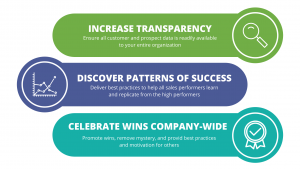Branding applies to businesses and people alike. If you’re a small business owner, crafting a personal brand is an important piece on the way to long-term success. A personal brand makes a small business accessible. It puts a face to a name and affords different promotional opportunities. A person can be interviewed or submit an article to a publication; a business can’t.
Emphasizing who you are, what your personal brand stands for, and how you’re distinctive from your competition constructs a foundation for small business growth. While there are similarities between business and personal branding, there are five essential components to establishing a strong personal brand. Take note and set your personal brand in motion today.
A great headshot
Associating a person or face with a brand instantly brings the business to life as it is relatable and becomes tangible to its audience. To put your best face forward, have a professional headshot available for any promotional items, guest speaking opportunities, and even your LinkedIn profile picture.
A high quality, fitting headshot does wonders for building a personal brand. It makes you accessible to your audience and fosters the feeling that you’re alive and responsive to your customers. Consider what kind of headshot works best for your industry, but also across the entire marketplace. If you’re in a creative business, incorporate elements that highlight your personality and expertise. Remember your headshot is often your first impression upon perspective clients and partners. Ensure it is an image that business-appropriate, and sets the tone for your future relationships.
A unique selling proposition
While not a tangible product, your unique selling proposition (USP) is what sets you apart from your competition. You, as a brand, represent something novel and different in the marketplace. To successfully brand yourself, you must be clear on your unique selling proposition.
To clarify your USP, ask yourself these three questions:
- Who is your audience?
- What problem are you trying to solve?
- How do you distinguish yourself from the competition?
People want to engage with brands and people who deliver value in a way that resonates with them. Your USP should be in sync with your target audience’s tone and preferences and relate to issues they’re continually deal with. If you are quirky or extremely organized, highlight those qualities to set you apart. Be consistent in how you message your USP and be sure to incorporate it into every piece of marketing you do. This will be the differentiator for you.
A professional website
Much like your headshot, prospective customers frequently visit websites before engaging with a business or brand. While your small business likely has a phenomenal website of its own, if you’re promoting a personal brand, you need a website, too!
Apply the same criteria you used to build your business website when crafting your personal website. Consider colors, tone, imagery, font choices; the list goes on and on. However, with your personal brand, you have a different message to deliver. Focus on clearly articulating and visually representing your unique selling proposition on the site.
However, the biggest “must have” for a successful personal brand website is that looks professional. If your website seems disjointed or amateur at all, you’ll lose viewers in an instant. Our website builder makes designing the perfect website a snap. With drag and drop options, 1,000s of icons and images, as well as complementary fonts and color schemes, your personal website will look like a savvy web designer built it for you. Take a closer look at the offerings to see how you can make your personal site today.
An active social media presence
We’ve discussed how versatile social media marketing is for small businesses, and for a personal brand, social media lends itself perfectly to crafting your desired image. Having active accounts on relevant social media platforms allows you to interact and impact your target audience. Your followers can become familiar with your tone, values, and unique selling proposition without engaging with your small business.
For credibility purposes, try to have the same username across platforms. This helps build recognition and increases the chances of people following you across various media. If you open social accounts, set a regular posting schedule so your accounts are active. There’s nothing worse than an abandoned social media account. It has negative repercussions on your personal brand, so only commit to as many social media accounts as you can realistically manage.
Social media provides a way for prospective customers to get to know you before committing to a purchase. Lure your audience in with consistent, useful, and conversational posts. You can use a more casual tone to showcase your personality while sharing relevant content with your followers. Feel free to sprinkle in some random posts such as quotes, your favorite images, and behind the scenes picture from your life. All of these components round out your image and your personal brand perception. Users can quickly learn who you are and determine that you’re someone they want to engage with.
Plenty of business cards
Last, but certainly not least, your personal brand needs business cards! Don’t be fooled by how digital the world has become. A business card is an important brand asset. They’re easy to carry, are tangible reminders of an encounter, and include all of your relevant contact information.
For a top notch business card, have its design fit with the rest of your brand offerings. Incorporate your logo and brand colors so the card seamlessly coordinates with your website and any other marketing materials you produce. Again, add your style to the card so it represents you and your personal brand. This is another way to remind prospective customers why they would choose you over the competition. You can subtly infer from the font choice to colors to messaging what your unique selling proposition is without being overbearing.
Business cards are a powerful marketing tool. Design a card that speaks to you and draws customers in.
As a small business owner, your business is part of your personal brand. Use these five techniques to create a recognizable and complementary identity to your small business. With these tools, you are well on your way to increasing credibility and authority without your industry. Do you have a personal brand? What are your essentials tools? Leave your thoughts in the comments below.
Business & Finance Articles on Business 2 Community(63)
Report Post



